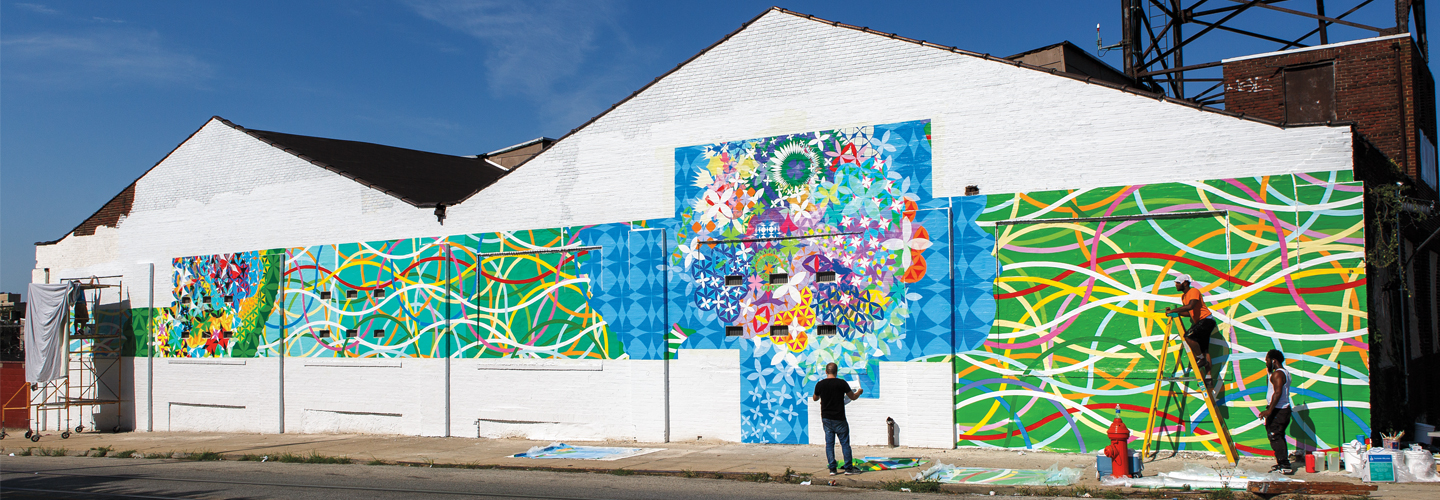Scholastic Art: What is your job?
Ben Volta: I am an artist, and for the past few years, I have partnered with Mural Arts Philadelphia to work with public schools—teachers and students—to create public art.
SA: What is your process?
BV: I use an exploratory process. First, I’ll just sit in the classroom for a month or two. I learn what the students are learning and watch how they respond to what they are learning. Then, the next month, I’ll bring in connections that I’ve made to their curriculum. For example, for one math class, I brought in a short film that related to what they were learning. For a month or two we explore possibilities—inspired by the curriculum and connections—about what our mural might be. I don’t go in with a plan for what we are going to make.

